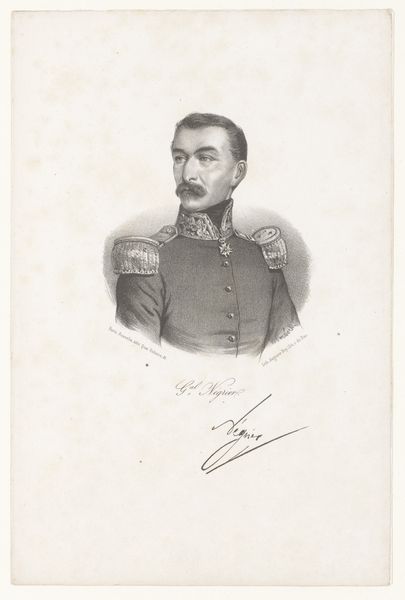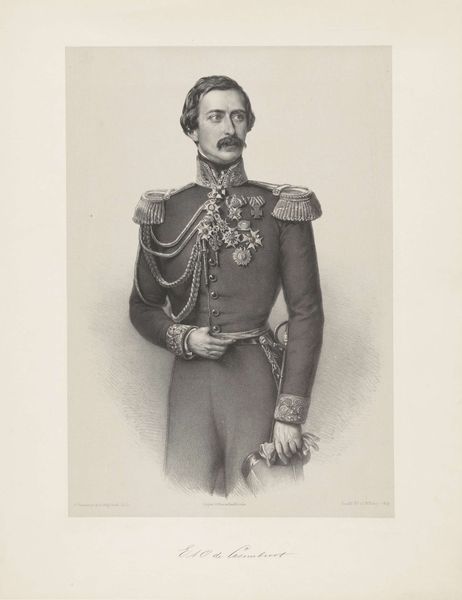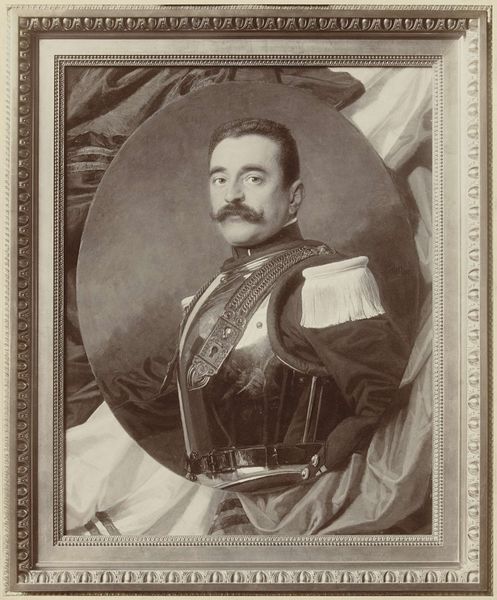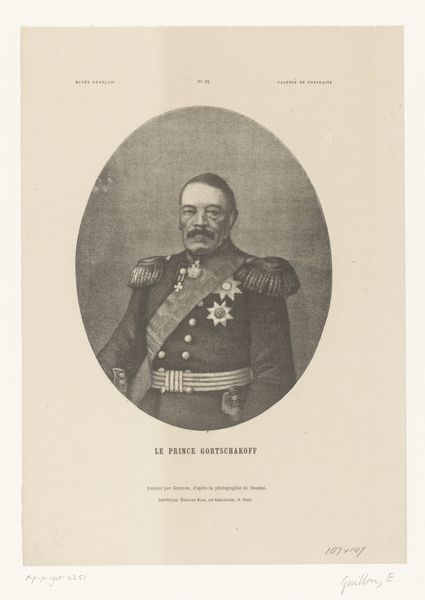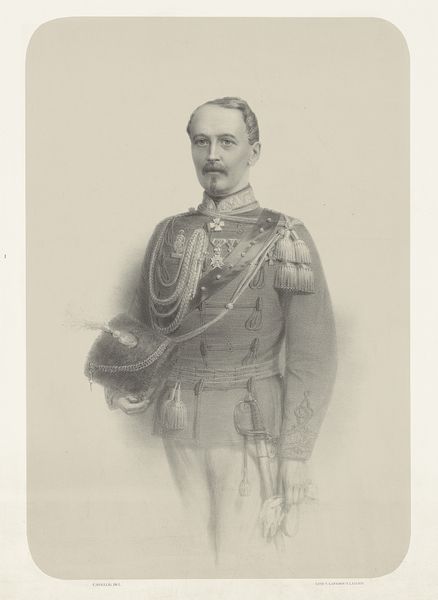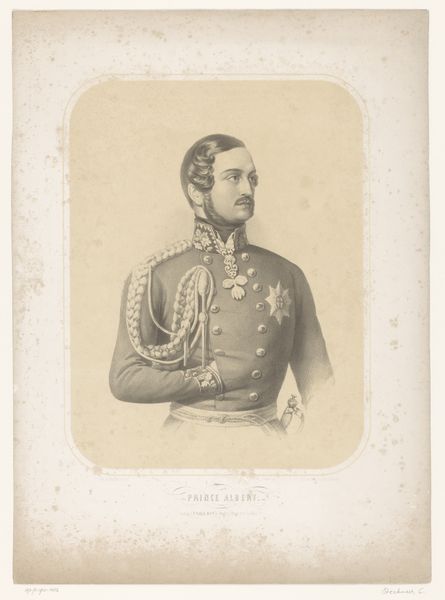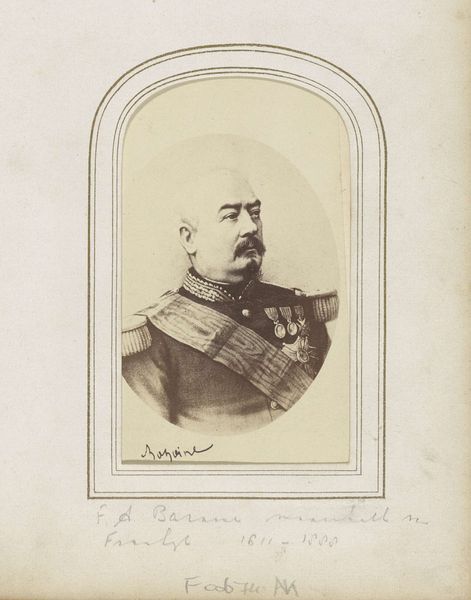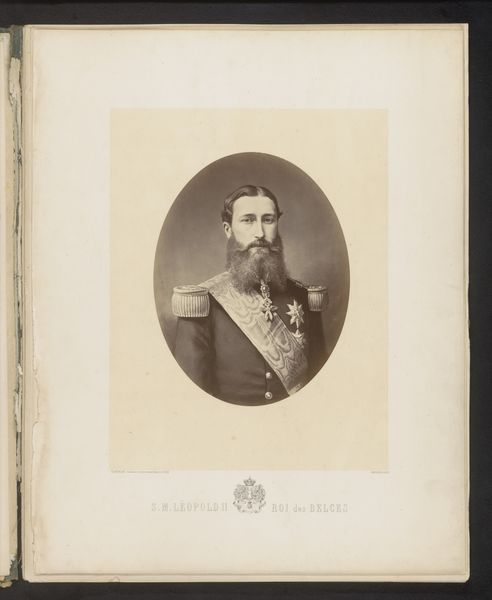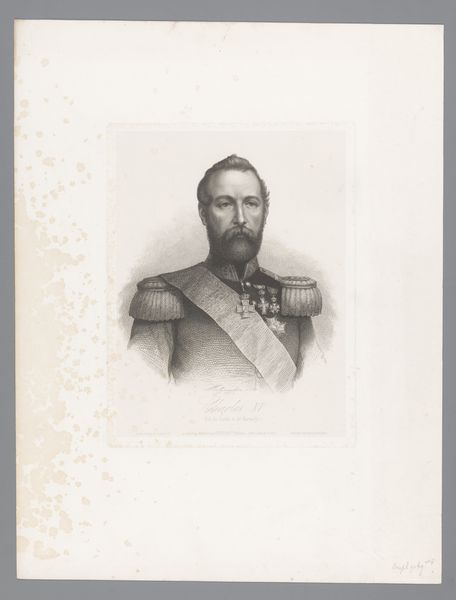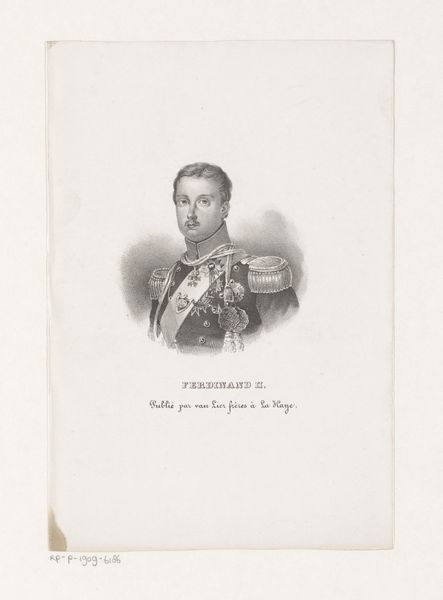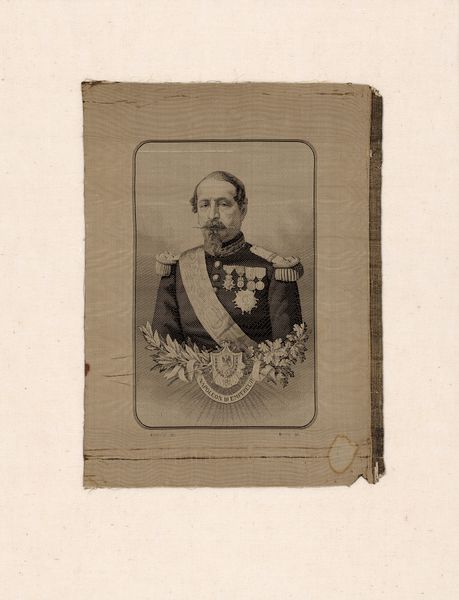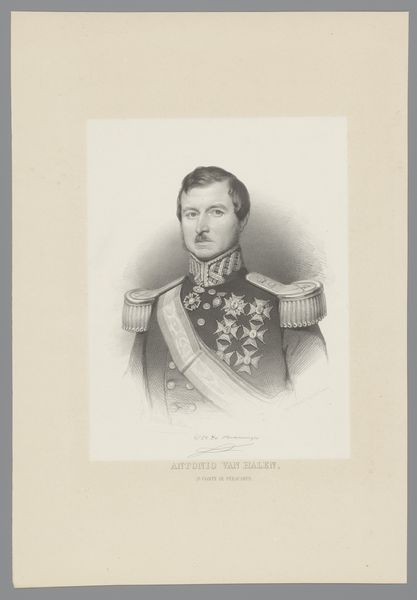
engraving
#
portrait
#
pencil sketch
#
old engraving style
#
romanticism
#
engraving
#
realism
Dimensions: height 107 mm, width 74 mm
Copyright: Rijks Museum: Open Domain
Editor: So, here we have an engraving of "Portret van Karel Anton van Hohenzollern-Sigmaringen," an 18th-century portrait currently residing at the Rijksmuseum. I’m struck by the formality of it, all the medals and decorations. What’s your take on this, especially in its historical context? Curator: I see this piece as deeply embedded in the politics of identity. This isn't simply a portrait, it is a meticulously crafted statement of power and legitimacy. Carl Mayer has captured Karel Anton in a way meant to project authority in the post-Napoleonic era, where existing power structures faced challenge and required a robust reaffirmation of social hierarchies. What does the visual emphasis on status, through symbols of wealth and power, communicate about shifting societal values at the time? Editor: It definitely seems like overcompensation, as if they felt the need to emphasize their authority to counteract some underlying insecurity. So, the artist might be complicit with maintaining the old European systems of aristocracy by producing propaganda material? Curator: Precisely! Ask yourself, whose stories are being told through art like this and whose are being omitted? Consider the engraving technique: a medium accessible to wider audiences through prints. How does that factor into shaping a controlled narrative? Editor: I hadn't thought about the print aspect and its potential reach. That's fascinating! So, on one hand, we are looking at fine art; on the other hand, we have propaganda. It all seems linked to privilege, in a way, then and even today. Curator: Exactly! It's crucial to examine art's involvement with social structures, unveiling those threads that bind historical portrayals to modern questions of access, equality, and representation. This wasn’t just about aesthetics, but the construction and maintenance of societal order. Editor: Wow, it’s made me consider how these artworks function in maintaining social order and continue doing so to this day. Thanks for making me think of all this!
Comments
No comments
Be the first to comment and join the conversation on the ultimate creative platform.

